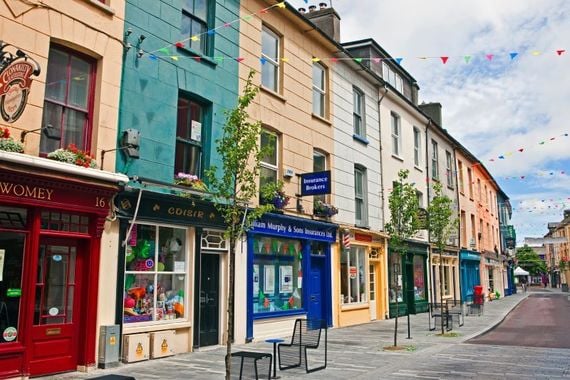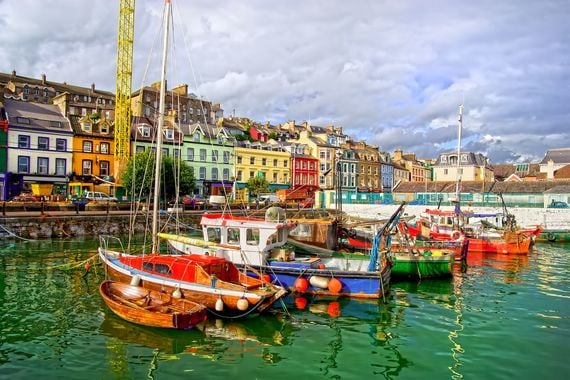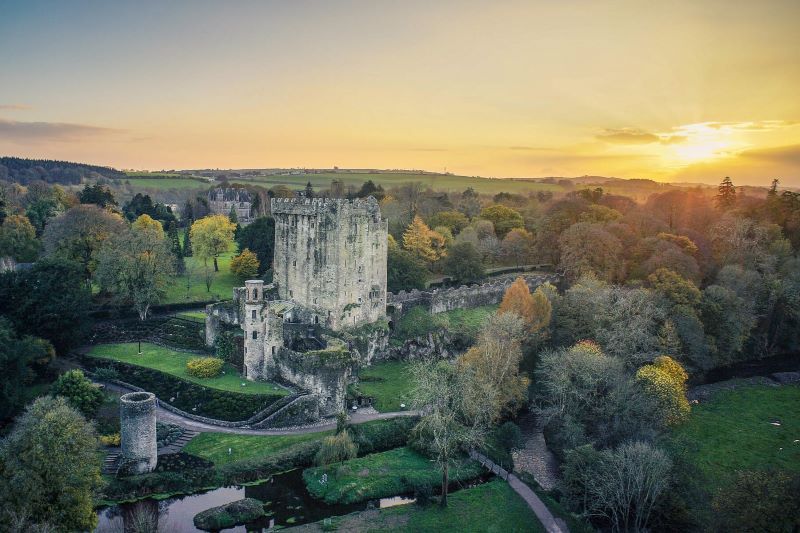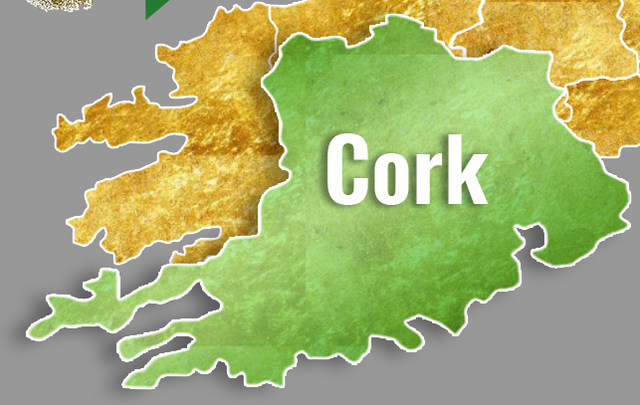Learn all about County Cork, the largest county in Ireland!
Irish Name: Corcaigh, meaning "Swamp"
Nickname: The Rebel County
Population: 542,868 (as of 2016)
Area: 2,895 square miles
Province: Munster
County Town: Cork
GAA Colors: Red and white

Clonakilty, County Cork. (Getty Images)
Common Surnames in County Cork
McCarthy, Callaghan, McAuliffe, Fitzgerald, Sullivan, Murphy, Walsh, Connor, and Connell
Famous People with roots in County Cork
Tip O'Neill, John Philpot Curran, William O'Brien, PM of Australia John Curtin, Nano Nagle (founder of Presentation order of nuns), Jonathan Rhys Meyers, Michael Collins, James Joyce, Jeremiah O'Donovan Rossa, Former Taoiseach Jack Lynch, Roy Keane, Denis Irwin, Cillian Murphy, Henry Ford, Frank O'Connor

Fishing boats in Cobh, County Cork. (Getty Images)
A Brief History of County Cork
Cork’s written history begins in the 7th century when St Finbarre founded a monastery on a corcach (marshy place).
County Cork was once party of the Kingdom of Deas Mumhan (South Munster), anglicized as "Desmond", ruled by the MacCarthy Mór dynasty. Following the Norman Invasion, in the 12th century, the McCarthy clan was pushed westward into West Cork and County Kerry. The north and east of Cork were taken by the Hiberno-Norman FitzGerald dynasty, who became the Earls of Desmond.
Cork City was given an English Royal Charter in 1318 and for many centuries was an outpost for Old English culture. The Fitzgerald Desmond dynasty was destroyed in the Desmond Rebellions of 1569–1573 and 1579–83. Much of the county was devastated in the fighting, particularly in the Second Desmond Rebellion. In the aftermath, much of Cork was colonized by English settlers in the Plantation of Munster.
In 1491, Cork played a part in the English Wars of the Roses when Perkin Warbeck, a pretender to the English throne, landed in the city and tried to recruit support for a plot to overthrow Henry VII of England. The Cork people fought with Perkin because he was French and not English, they were the only county in Ireland to join the fight.
In 1601, the decisive Battle of Kinsale took place in County Cork, which was to lead to English domination of Ireland for centuries. Kinsale had been the scene of a landing of Spanish troops to help Irish rebels in the Nine Years' War (1594–1603). When this force was defeated, the rebel hopes for victory in the war were all but ended. County Cork was officially created by a division of the older County Desmond in 1606.
“The Rebel County”, County Cork’s nickname, has origins in the 15th century but the name is largely attributed to the prominent role Cork played in the Irish War of Independence (1919 to 1921). Cork was a treaty stronghold during the Irish Civil War (1922 to 1923).

Blarney Castle and Gardens in County Cork. (Ireland's Content Pool)
Key attractions in County Cork
Fota Wildlife Park is located on Fota Island, near Carrigtwohill, the park is home to 30 mammals and 50 bird species. Some animals roam free while the others are houses in paddocks to allow viewing in their natural habitats.
Dunlough Castle, standing atop the cliffs at the northern tip of the Mizen Peninsula, is one of Ireland’s oldest castles. Founded in 1207 by Donagh O’Mahony it is an interesting example of Norman architecture and dry stone masonry.
The Cobh Heritage Centre is a museum located in the coastal town of Cobh, the center includes the “Queenstown Experience. The museum provides information on life in Ireland through the 18th and 19th centuries, the mass emigration, the Great Famine, and on how criminals were transported to Australia for petty crimes.
For more from IrishCentral's "What's your Irish county" series, click here!

Are you planning a vacation in Ireland? Looking for advice or want to share some great memories? Join our Irish travel Facebook group.




Comments